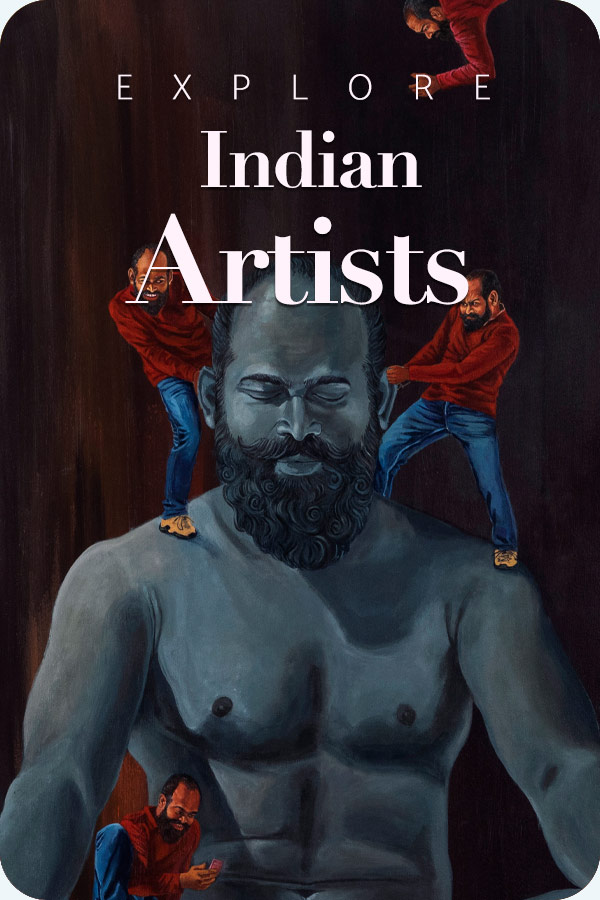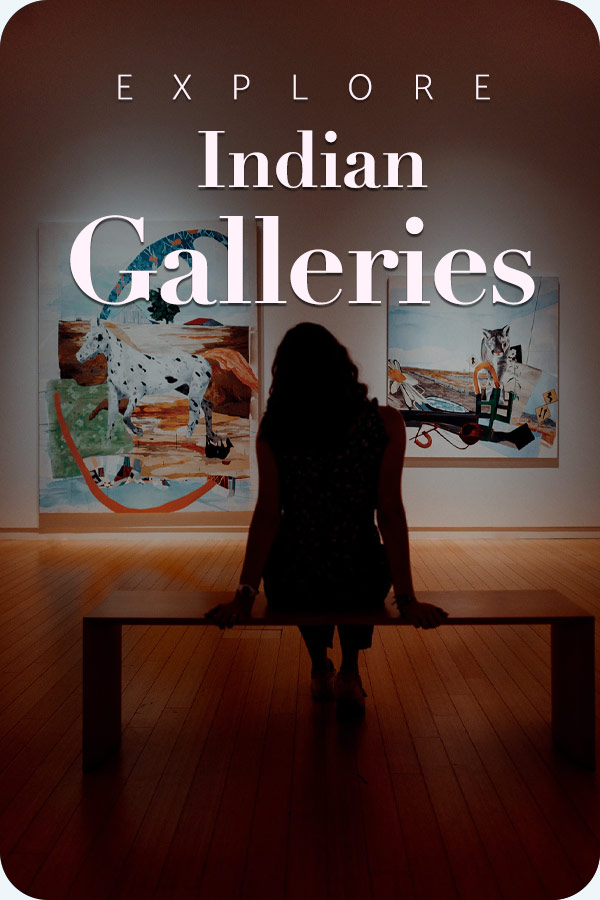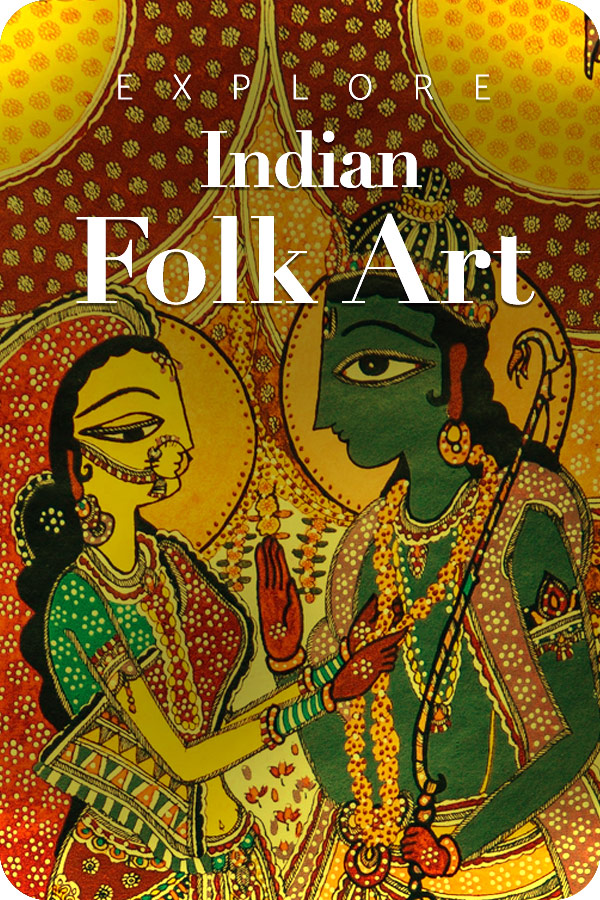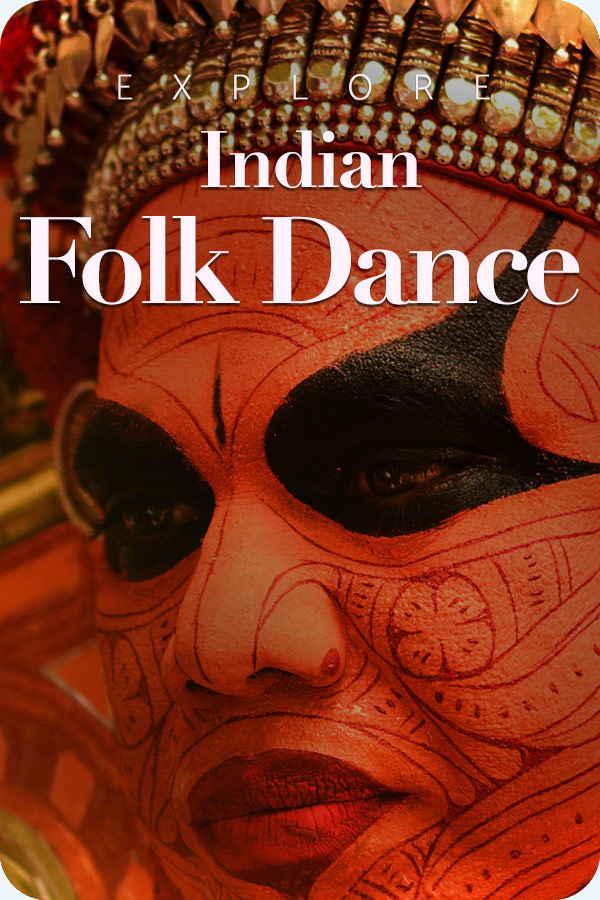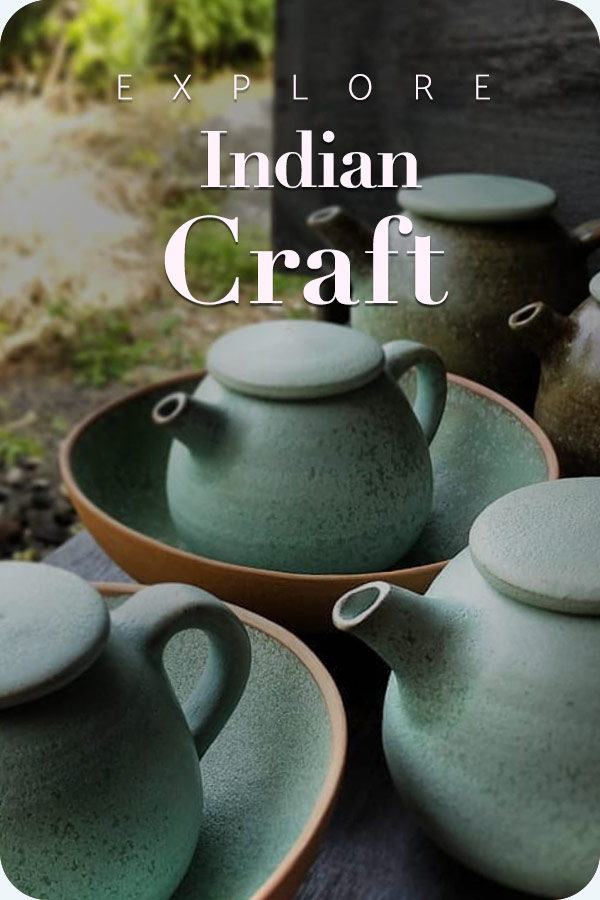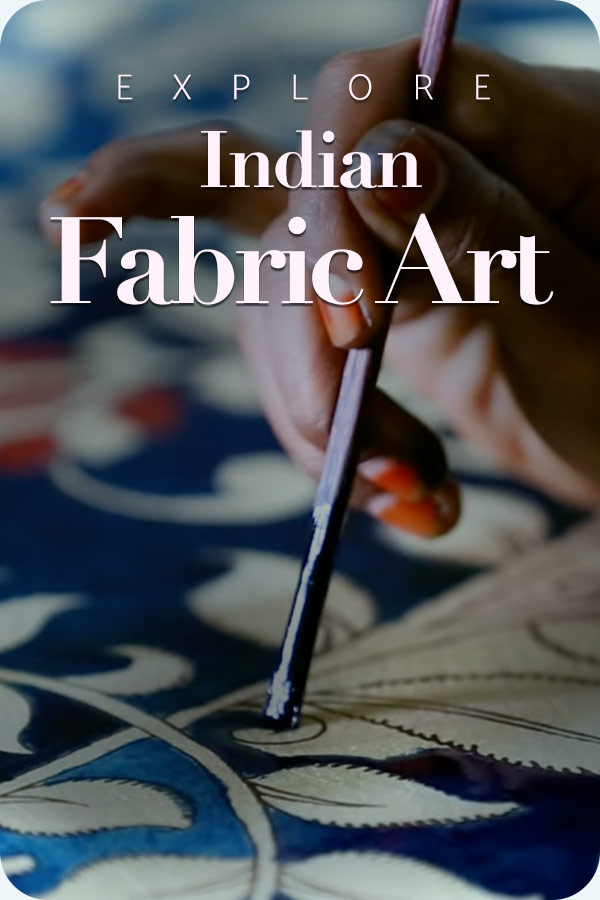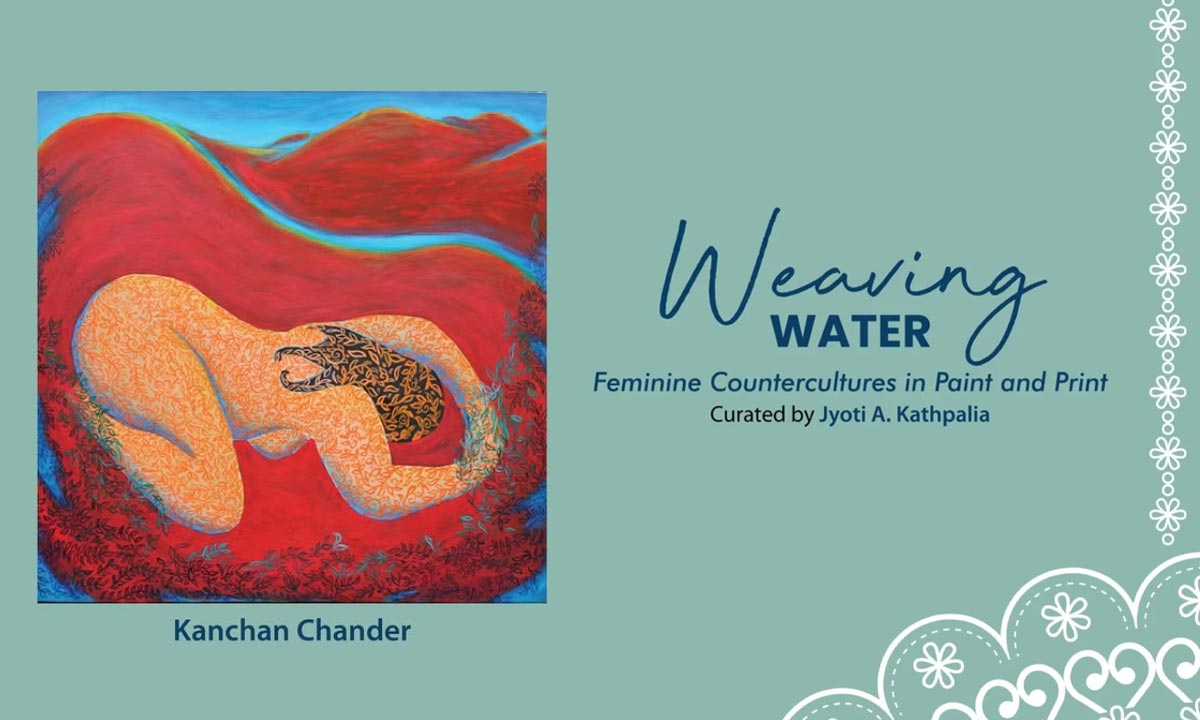
The Indian International Centre (IIC) in New Delhi is set to host an exhibition titled “Weaving Water: Feminine Countercultures in Paint and Print.” Scheduled to run from October 30th to November 10th, 2025, the exhibition breaks the confines of typical displays of paintings and offers a more multi-sensory experience aimed at deconstructing the challenges faced by women in society. Under the able curation of Jyoti A. Kathpalia, the exhibition brings together the works of 15 eminent women artists, whose works are a collective visual response to the painful words of Padma Shri Ajeet Cour’s autobiography, Weaving Water. The fusion of multiple creative forms, like painting, sculpture, and literature, marks a very bold attempt by these artists to create a more equitable cultural fabric denoting the feminine experience. The exhibition explores what curator Jyoti A Kathpalia describes as the “search for an alternate, more equal world and the re-visioning of the feminine.”
The Thematic Spine
The dual metaphor of Water and Weaving is used to create a lens to view the continuity, rupture, and care – the qualities that are inherently present in females. The works in paint and print explore the fluidity of identity, memory, and language, and the art of weaving, involving pattern, repetition, and repair. The artists have consciously picked the confessional and feminist traces from the autobiography of Ajeet Cour and adapted those into their artworks, making them not only interpretative but also archival in nature to some extent. The resulting pieces are transmitters of domestic histories reworked into public testimony, private loss converted into collective narrative.
Each artwork is an active vector of a strong counterculture. It is not merely illustrative, but resonates with the echoes of themes like gender inequality, the suffocating nature of the “oppressive middle-class family structure, and the collective silencing of women’s voices. The works by the fifteen female artists engage in a powerful, intense cross-disciplinary exchange, taking the raw text and transforming it into vibrant expressions that speak to a universal yet intensely personal struggle for self-definition and liberation.
The Artists
View this post on Instagram
Curator Jyoti A. Kathpalia has structured the exhibition around logical pairings of prints beside paintings, older masters placed in a way that complements the younger practitioners, to trace the shifts in technique and political temper across generations.
The fifteen eminent artists include Anupam Sud, Gogi Saroj Pal, and Jayasri Burman. Most importantly, the list includes Arpana Caur, Ajeet Cour’s daughter and an internationally renowned painter, whose art is intrinsically linked to her mother’s life. Additionally, a ten-minute performance piece by Manmeet Devgun titled Water Weaver, and the screening of the 30-minute Sahitya Akademi film on Ajeet Cour is also listed on the schedule.
The mediums employed are as diverse as the artists’ viewpoints, ranging from traditional fine arts like oil, acrylic, and charcoal painting to complex printmaking techniques (silkscreen and etching), mixed media installations, and sculptural works, making the whole experience utterly wholesome.
| Event | Detail |
|---|---|
| Exhibition Title | Weaving Water: Feminine Countercultures in Paint and Print |
| Duration | October 30 – November 10, 2025 |
| Venue | Main Art Gallery, Kamla Devi Complex, India International Centre (IIC), New Delhi |
| Curator | Jyoti A. Kathpalia |
| Source Text | Weaving Water: An Autobiography by Padma Shri Ajeet Cour |
| Participating Artists | 15 women artists, including Anupam Sud, Gogi Saroj Pal, Jayasri Burman, and Arpana Caur |
| Multimedia Elements | Performance by Manmeet Devgun, Sahitya Akademi film on Ajeet Cour, Punjabi text renditions |
Key highlights (bulleted)
- The exhibition foregrounds 15 eminent Indian women artists working across painting and print media.
- A film by Padma Shri Ajeet Cour anchors the show, linking literary and visual forms.
- Curatorial strategy favors cross-generational dialogue and material practices (weaving, printmaking, layered paint).
- Institutional backing from IIC situates the show within a formal programme, expanding its public reach.
- Coverage across trade press, regional news sites, and social media demonstrates active cultural interest and dissemination.
A Crit:ical Perception: Why this matters?
Weaving Water aims to do something truly offbeat in the Indian artscape; it will stitch together literature and visual art into a single platform that acknowledges both the political niche of words and the sensible power of image. Through this exhibition, Ajeet Cour’s under-acknowledged stature is going to spread beyond the limits of certain linguistic communities. Now, the fact that it truly matters the most lies in the institutionalized attempt to amplify women’s histories without restricting them to the stereotypical ambit of “women’s shows”.
The exhibition’s true success cannot be reckoned by the number of press coverings it attracts, but in how many meaningful conversations it sparks, whether audiences leave with a renewed appetite for feminist stories, are the real measures. Overall, the main emphasis lies in the fact that true change is not found in legislative reform alone, but in the bold act of breaking the silence. This exhibition forces the viewer to move past the superficial celebration of “liberated women” and grapple with Ajeet Cour’s radical proposition: that external freedom is meaningless without internal, psychological liberation.


